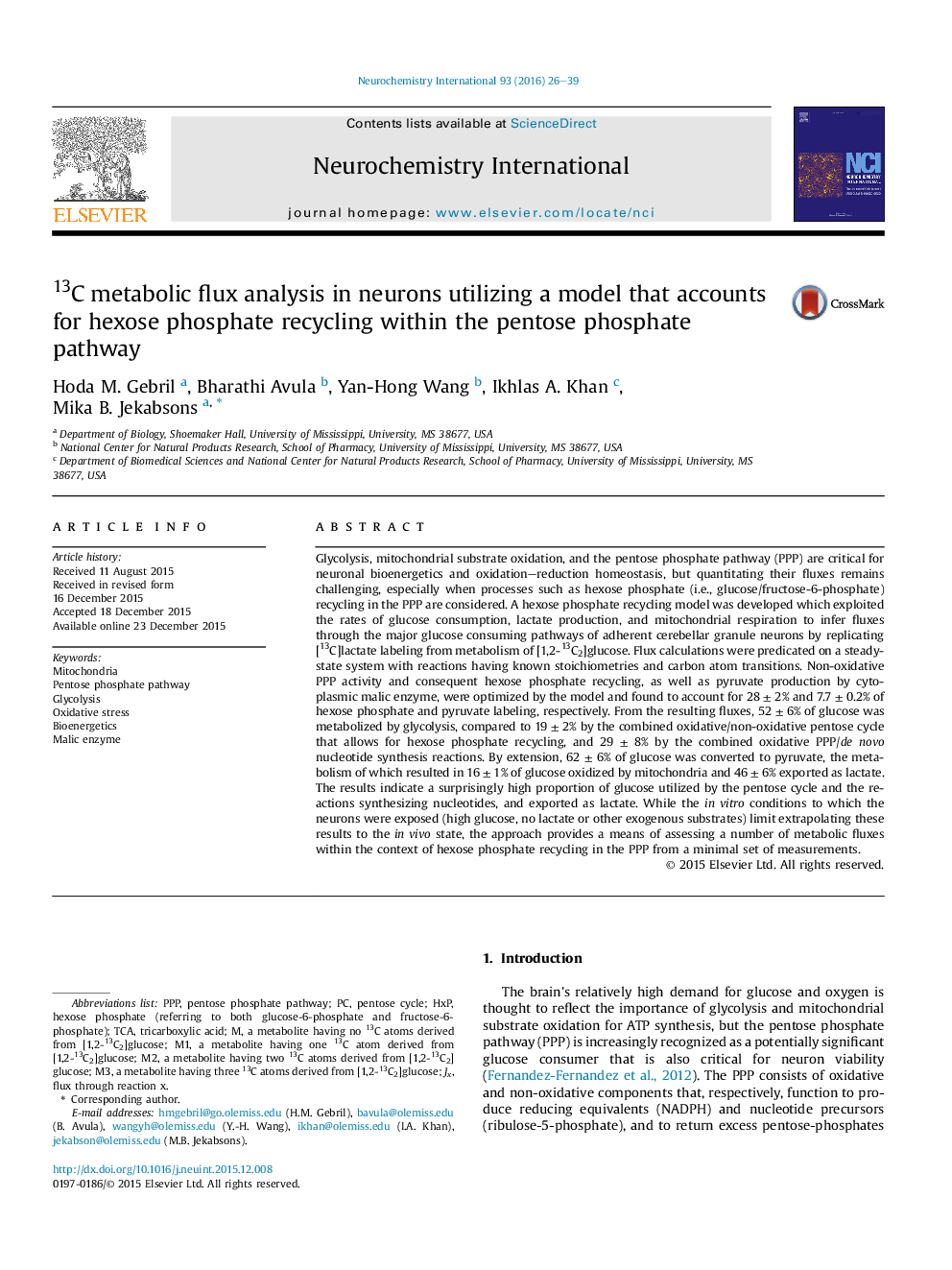| کد مقاله | کد نشریه | سال انتشار | مقاله انگلیسی | نسخه تمام متن |
|---|---|---|---|---|
| 2200337 | 1551282 | 2016 | 14 صفحه PDF | دانلود رایگان |

• A model was developed to quantitate neuronal metabolism from 13C2 glucose.
• 13C randomization in lactate due to hexose phosphate recycling was determined.
• Glycolysis and the pentose cycle accounted for 52 and 19%, resp. of glucose used.
• Only 16% of glucose was used by mitochondria vs. 46% by lactate dehydrogenase.
• This approach yielded extensive flux information from minimal experiments.
Glycolysis, mitochondrial substrate oxidation, and the pentose phosphate pathway (PPP) are critical for neuronal bioenergetics and oxidation–reduction homeostasis, but quantitating their fluxes remains challenging, especially when processes such as hexose phosphate (i.e., glucose/fructose-6-phosphate) recycling in the PPP are considered. A hexose phosphate recycling model was developed which exploited the rates of glucose consumption, lactate production, and mitochondrial respiration to infer fluxes through the major glucose consuming pathways of adherent cerebellar granule neurons by replicating [13C]lactate labeling from metabolism of [1,2-13C2]glucose. Flux calculations were predicated on a steady-state system with reactions having known stoichiometries and carbon atom transitions. Non-oxidative PPP activity and consequent hexose phosphate recycling, as well as pyruvate production by cytoplasmic malic enzyme, were optimized by the model and found to account for 28 ± 2% and 7.7 ± 0.2% of hexose phosphate and pyruvate labeling, respectively. From the resulting fluxes, 52 ± 6% of glucose was metabolized by glycolysis, compared to 19 ± 2% by the combined oxidative/non-oxidative pentose cycle that allows for hexose phosphate recycling, and 29 ± 8% by the combined oxidative PPP/de novo nucleotide synthesis reactions. By extension, 62 ± 6% of glucose was converted to pyruvate, the metabolism of which resulted in 16 ± 1% of glucose oxidized by mitochondria and 46 ± 6% exported as lactate. The results indicate a surprisingly high proportion of glucose utilized by the pentose cycle and the reactions synthesizing nucleotides, and exported as lactate. While the in vitro conditions to which the neurons were exposed (high glucose, no lactate or other exogenous substrates) limit extrapolating these results to the in vivo state, the approach provides a means of assessing a number of metabolic fluxes within the context of hexose phosphate recycling in the PPP from a minimal set of measurements.
Figure optionsDownload as PowerPoint slide
Journal: Neurochemistry International - Volume 93, February 2016, Pages 26–39